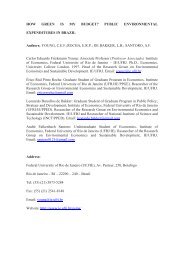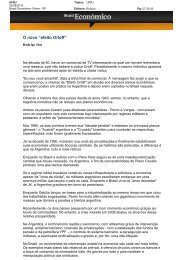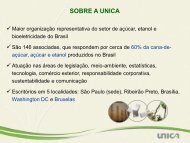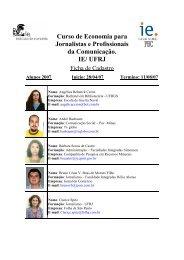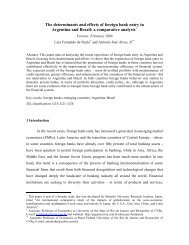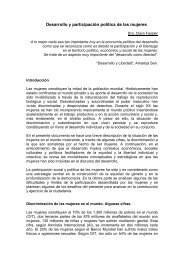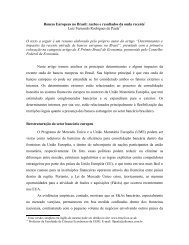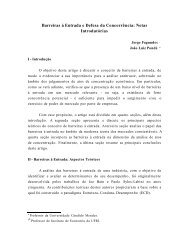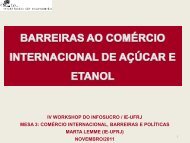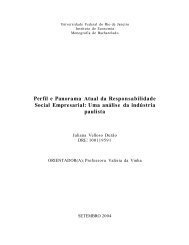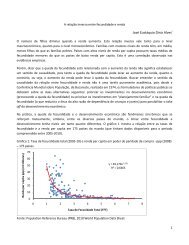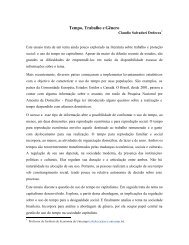Trade Integration for the Americas: What Can Economic Analysis ...
Trade Integration for the Americas: What Can Economic Analysis ...
Trade Integration for the Americas: What Can Economic Analysis ...
- No tags were found...
You also want an ePaper? Increase the reach of your titles
YUMPU automatically turns print PDFs into web optimized ePapers that Google loves.
19also members. Such early skepticism has however proved exaggerated. Intrabloc tradeincreased sharply, especially in <strong>the</strong> early to mid-1990s, a reasonably effectiveinstitutional has been developed and <strong>the</strong> member country Governments have taken <strong>the</strong>institution seriously. Movements toward integration, however, have gone slowly and notwithout difficulties. A common external tariff (CET) was <strong>for</strong>mally adopted in an attemptto move towards a customs union, but <strong>the</strong>re are still abundant exceptions. 22 In addition,apart from inconsistencies and differences between domestic and international legalobligations related to MERCOSUL, <strong>the</strong>re are very problematic procedures <strong>for</strong> disputesettlement.The last six years of MERCOSUL’s history have been more problematic than itsearly years. With currency overvaluation in both Argentina and Brazil in <strong>the</strong> mid-1990s,Argentina developed a com<strong>for</strong>table trade surplus with Brazil. This began to change with<strong>the</strong> Brazilian currency depreciation in 1999 and continued even after <strong>the</strong> collapse of <strong>the</strong>Convertibility Plan (and peso overvaluation) in 2002. 23 Pressure from Brazilian products,coupled with Argentine economic problems and protectionist interests, has put strains onBrazilian-Argentine economic relations and, by association, on MERCOSUL.There are a number of immediate issues facing MERCOSUL as an institution.They include: (a) improving <strong>the</strong> mechanism <strong>for</strong> intrabloc trade dispute settlement; (b)establishing a united front <strong>for</strong> effective trade negotiations (FTAA, FTA with <strong>the</strong> EU,Doha Round); (c) eliminating <strong>the</strong> many exceptions to <strong>the</strong> common external tariff; (d)implementing <strong>the</strong> intrabloc agreement on free trade in automobiles (scheduled <strong>for</strong>implementation in 2006); (e) eliminating nontariff barriers on intrabloc trade; (f)elimination of Argentina’s special import tax on sugar; (g) designing a workablesafeguards mechanism <strong>for</strong> intrabloc trade consistent with <strong>the</strong> trade objectives ofMERCOSUL; (h) handling <strong>the</strong> possible entry of Venezuela (to be dealt with at <strong>the</strong>scheduled December 2005 meeting); and (i) possibly most importantly, finding a way tohandle <strong>the</strong> ongoing Argentine-Brazilian trade disputes without underminingMERCOSUL.Many of <strong>the</strong>se issues indeed reflect <strong>the</strong> last one listed above – <strong>the</strong> festeringArgentine-Brazilian trade disputes To mention just few, <strong>the</strong> present ArgentineGovernment, acting out of its perceived national economic interests has: (i) imposedimport licensing requirements on Brazilian goods imported into Argentina <strong>for</strong> thoseproducts deemed sensitive; (b) induced Brazilian private sector associations, withBrazilian Government connivance, to impose “voluntary” export restrictions <strong>for</strong> goodssold in <strong>the</strong> Argentine market on <strong>the</strong>ir members in order to head off more drasticdiscriminatory import controls by <strong>the</strong> Argentine Government; (c) proposed a“safeguards” mechanism, decided unilaterally, to guard against imports from member22 The average MERCOSUL CET has remained high (currently about 12 percent) and unchanged overrecent years. The intended movement towards a customs union, with even deeper future integrationintended, dampened Chile’s enthusiasm <strong>for</strong> participation as a full member. It elected instead associatemembership enabling it to retain and pursue its own, more open, trade policies.23 In 2000, <strong>for</strong> <strong>the</strong> first time since 1994, Brazil developed a bilateral trade surplus with Argentina.



